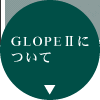予定表 -詳細情報-
| 件名 | LS 山田恭平氏 |
| 開始日時 | 2010年 11月 9日 (火曜日) 12時15分 (GMT+09:00) |
| 終了日時 | 2010年 11月 9日 (火曜日) 12時50分 (GMT+09:00) |
| 場所 | 1号館310教室 |
| 詳細 | GLOPE II ランチタイムセミナー 【日時】:2010年11月9日(火)12:15-12:50 【場所】:1号館 310教室 【報告者】:山田恭平氏(Ph.D Candidate, Yale University) 【タイトル】:Testing Social Psychological Theories regarding Social Norms Using a Field Experiment in Japan 【概要】: We conducted a randomized field experiment in Japan in the 2007 Upper House election to test social psychological theories regarding social norms, which find that people adjust their behaviors to conform to what others typically do. If this is applicable in political behaviors, then get-out-the-vote communications suggesting that a large number of people participate in elections should be effective for raising turnout. On the other hand, those suggesting that many fail to vote may have an adverse effect. We randomly assigned voters into three groups and sent them different types of postcards prior to the election. We find that the message indicating high expected participation had a positive and statistically significant effect on voter turnout, while the message indicating low expected participation did not. Our findings are consistent with the similar experimental study of American voters. * The talk will be given in Japanese. |
| カテゴリー | 政治経済学基礎セミナー・ランチタイムセミナー |








